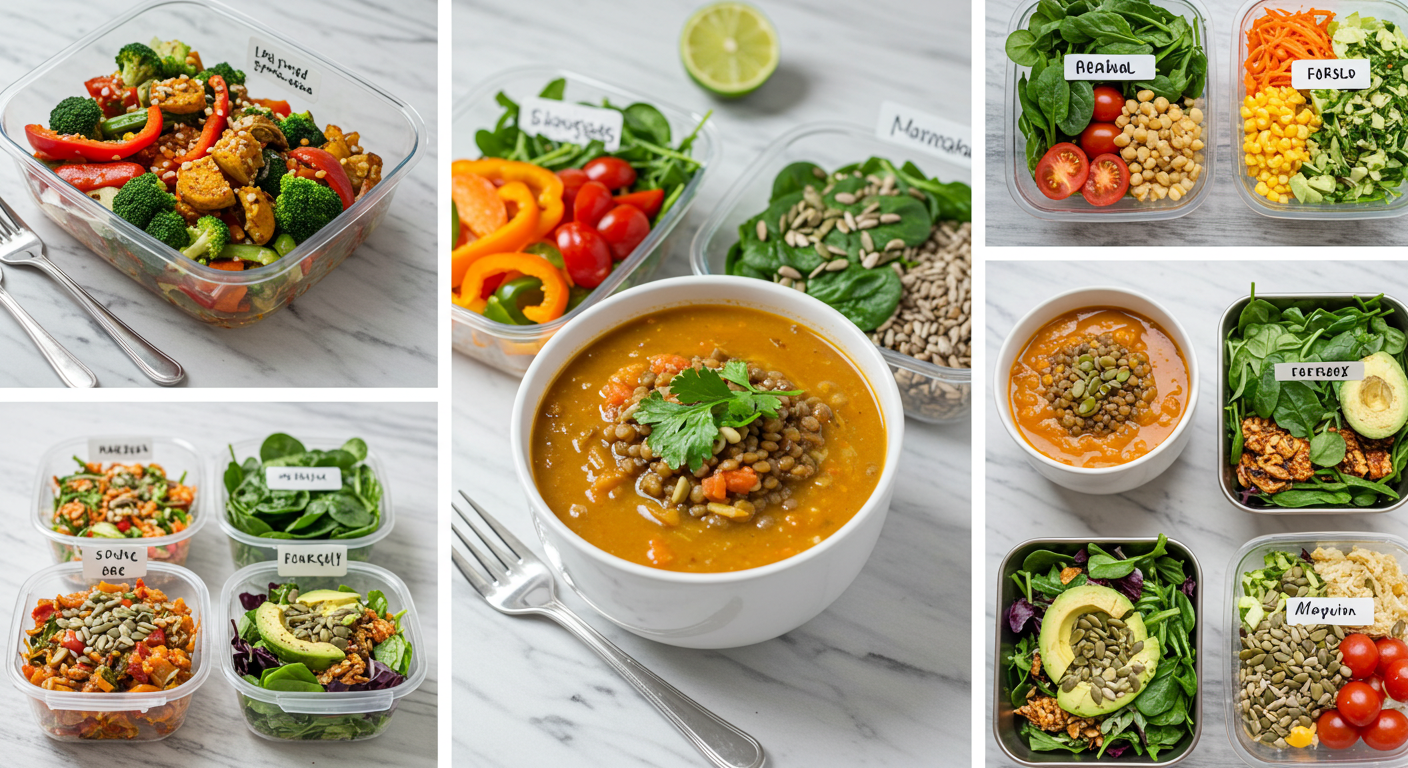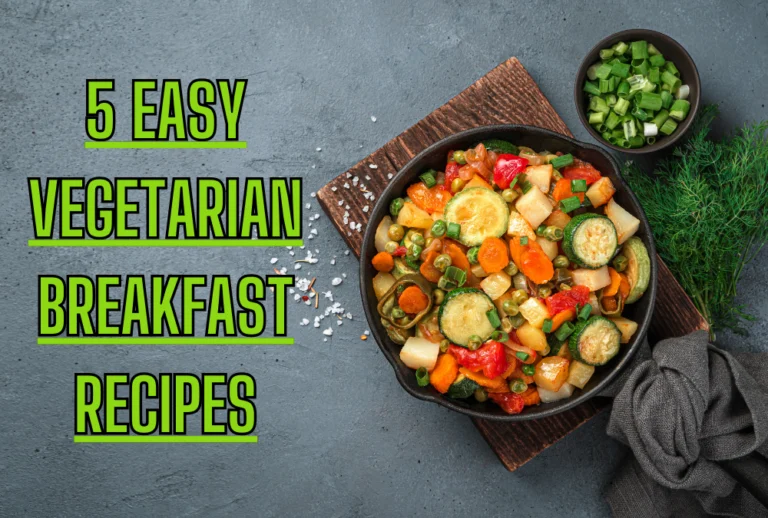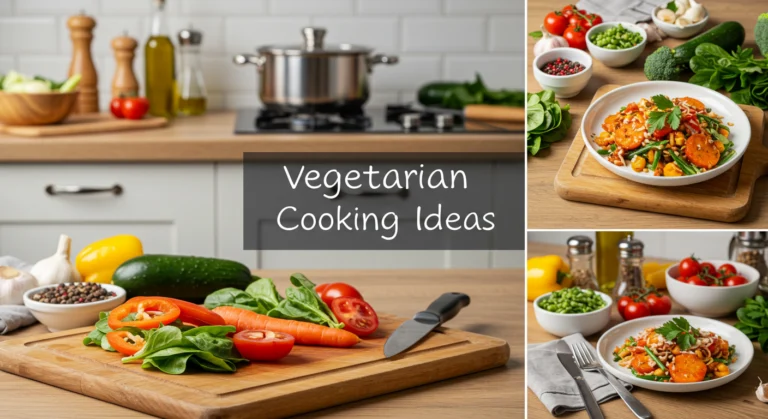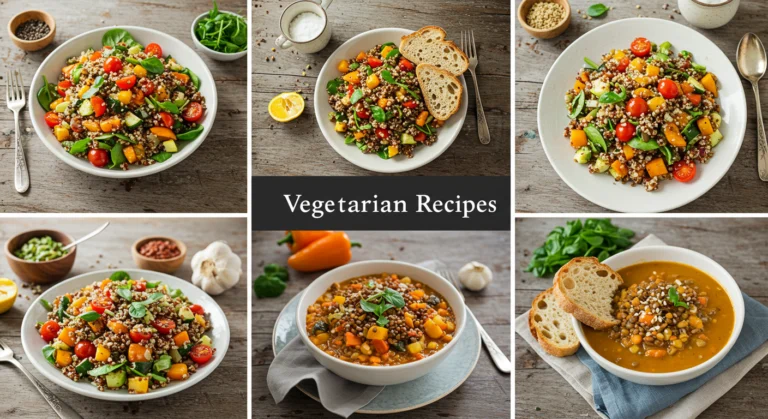Vegan Meal Prep: Quick and Nutritious Recipes

Ever felt like there’s never enough time to eat well during a busy week? We’ve been there too. Juggling work, family, and self-care often leaves little room for planning balanced vegan meal prep meals – until now. What if you could reclaim hours in your schedule and nourish your body with vibrant, plant-based dishes?
This guide is designed for anyone craving simplicity without sacrificing flavor or nutrition. Whether you’re new to plant-based eating or a seasoned pro, we’ll walk through time-saving strategies that fit real-life demands. From breakfast bowls to hearty dinners, every recipe prioritizes fresh ingredients and minimal prep work.
Why spend mornings scrambling to pack lunches or evenings stressing over dinner? With thoughtful planning, you can create nutrient-packed meals that fuel your week. We’ve combined expert insights with kitchen-tested tips to help you:
- Batch-cook staples like grains and roasted veggies
- Mix-and-match components for varied flavors
- Store dishes to maximize freshness
Ready to transform how you approach food? Let’s build a system that works as hard as you do.
Key Takeaways
- Streamline your weekly routine with efficient plant-based planning
- Discover balanced recipes that cater to breakfast, lunch, and dinner
- Learn budget-friendly methods to reduce kitchen time
- Access expert-approved techniques for meal longevity
- Create adaptable dishes to prevent flavor fatigue
Table of Contents
- Introduction to Vegan Meal Prep
- Meal Prep Basics and Benefits
- Planning Your Vegan Meal Prep Week
- Tools and Containers: Setting Up Your Prep Station
- Quick and Nutritious Vegan Recipes for Every Meal
- Vegan Meal Prep: Step-by-Step Cooking Techniques
- Budget-Friendly Meal Prep and Time Management Tips
- Storing, Freezing, and Reheating: Keeping Meals Fresh
- Creative Ideas for Sauces and Dressings
- Conclusion
- FAQ
- How do I ensure balanced nutrition when planning plant-based meals?
- What’s the best way to keep prepped ingredients fresh all week?
- Can I prep meals without spending hours in the kitchen?
- Are there affordable protein sources for weekly prep?
- How can I add variety to repetitive meal plans?
- What containers work best for different food types?
- How do I prevent meal boredom with prepped dishes?
Introduction to Vegan Meal Prep
Ever wonder how some people breeze through hectic weeks with nourishing food ready to go? It’s not magic—it’s strategy. Planning ahead transforms chaotic days into manageable ones, especially when embracing plant-focused eating.
What Is Meal Prep and Why It Matters
Batch cooking isn’t just about saving time. Studies show that those who plan their food intake make healthier choices. By dedicating 90 minutes weekly to prepping staples like rice or roasted veggies as part of your vegan meal prep, you’ll avoid last-minute takeout traps.
Think of it as building blocks. A cup of quinoa becomes tomorrow’s salad base or a hearty bowl component. Mixing beans with fresh herbs creates versatile protein sources. This approach cuts daily cooking stress while boosting flavor variety.
The Benefits of a Plant-Based, Prepared Lifestyle
Pre-portioned ingredients mean fewer wasted groceries. One survey found households using organized lists reduce food waste by 23%. When your fridge holds ready-to-assemble components, sticking to nutritious choices feels effortless.
Quality matters. Choosing vibrant produce and whole grains ensures every recipe packs maximum nutrients. Imagine opening containers filled with colorful peppers, crisp greens, and tangy dressings—all prepped in advance. That’s how consistency meets delight.
Ready to simplify your routine? Start with two core dishes this weekend. You’ll gain hours back—and maybe even rediscover the joy of stress-free eating.
Meal Prep Basics and Benefits
Struggling to balance nutrition with a packed schedule? The secret lies in smart kitchen systems. Organized preparation transforms scattered ingredients into flavorful dishes that support your goals while saving energy.
Understanding the Foundations of Meal Prep
Start with three building blocks: grains, chopped veggies, and plant proteins. Batch-cook rice or quinoa in a large pot—these become bases for stir-fries or grain bowls. Roast two trays of seasonal produce like zucchini and bell peppers. Their natural sweetness intensifies when cooked ahead.
Research shows planning reduces kitchen mistakes by 40%. Instead of improvising daily, assemble prepped components into tacos, salads, or wraps. Try marinating baked tofu on Sunday—it stays fresh for four days. Simple swaps like using lime instead of lemon can refresh flavors midweek.
Health and Nutritional Advantages
Pre-cut vegetables retain more vitamins than leftovers. A study found pre-portioned greens maintain 90% of their folate content. Combining legumes with whole grains creates complete proteins, essential for plant-focused diets.
Having ready-to-eat options cuts impulsive snacking. Imagine opening your fridge to colorful containers of spiced chickpeas, steamed broccoli, and tahini dressing. You’ll nourish your body without decision fatigue. Bonus? One-pot dishes mean fewer dishes to wash.
Begin with two foundational recipes this week. Roast sweet potatoes and simmer a lentil stew. Mix them into different combinations—your future self will thank you.
Planning Your Vegan Meal Prep Week
What if your kitchen could become a stress-free zone? Strategic planning for vegan meal prep turns chaotic ingredient piles into organized nourishment. Let’s map out a system that keeps your fridge stocked and your mind clear.
Creating a Balanced Meal Plan
Start by sketching three daily meals using this formula:
- Choose one protein source (like lentils or tempeh) per day
- Pick two vegetable types for each recipe
- Rotate grains between quinoa, brown rice, and farro
Nutritionists suggest aiming for 45-55g plant protein daily. Batch-cook 2 cups of quinoa on Sunday—it triples in volume and works in salads, stir-fries, or breakfast bowls. Seasonal produce adds natural variety; think summer zucchini or fall squash.
Building Your Comprehensive Grocery List
Transform your meal plan into a categorized shopping guide:
- Produce: List veggies by recipe and snack needs
- Pantry: Include canned beans and whole grain staples
- Fresh herbs: Basil or cilantro for flavor boosts
Group items by store sections to slash shopping time. One pro tip? Keep a running list on your phone when ingredients run low. For accuracy, measure dry goods like rice using clear containers—you’ll always know when to restock.
“A detailed list prevents three midweek store runs,” shares meal prepper Jenna T. Review your plan Friday afternoon, then shop Saturday morning. You’ll gain hours while keeping meals exciting and nutrient-dense.
Tools and Containers: Setting Up Your Prep Station
What separates chaotic kitchen sessions from seamless cooking? The answer often lies in your toolkit. Just as painters need quality brushes, organized cooks thrive with intentional equipment choices. Let’s explore how smart storage solutions elevate your routine.
Must-Have Storage Containers and Utensils
Glass containers like Pyrex’s 4-cup models lock in flavor while resisting stains. Their airtight seals prevent leaks—perfect for dressings or saucy dishes. For grab-and-go lunches, Mepal’s stackable boxes fit neatly in bags without crowding fridge shelves.
Stasher silicone bags shine for freezing soups or marinating tofu. Unlike plastic, they won’t warp after repeated use. Pair these with a sharp chef’s knife and sturdy cutting board—dull blades waste precious time and compromise texture.
Why does this matter? Uniform containers let you visualize portions instantly. When every grain bowl uses the same 24-oz dish, balancing nutrients becomes second nature. Dedicated tools also slash active cooking hours. Pre-chopping veggies on Sunday means weekday stir-fries come together in 10 minutes.
Pro tip: Label lids with dates using chalk markers. You’ll always know which lentil curry to eat first. Keep your station clutter-free with a rotating spice rack and magnetic knife strip. Efficiency isn’t about having more—it’s about having what works.
Quick and Nutritious Vegan Recipes for Every Meal
What if your mornings started with grab-and-go fuel that powers your day? We’ve crafted vegan meal recipes that turn hectic schedules into opportunities for vibrant eating. Let’s explore dishes designed for vegan meal prep to delight your taste buds while keeping effort minimal.
Easy Breakfast and Snack Ideas
Kickstart your day with creamy overnight oats blended with peanut butter and chia seeds. Prep jars in five minutes—just add plant milk and refrigerate. For savory lovers, tofu scramble wraps with spinach take 12 minutes. Bake a batch of banana-oat muffins Sunday night for weekday snacks.
Lunch and Dinner Inspiration for Busy Days
Build nourishing bowls using pre-cooked rice, roasted veggies, and spiced chickpeas. Try our black bean quinoa chili—simmer ingredients in one pot while you tackle other tasks. Stuffed sweet potatoes with avocado mash make hearty lunches. For crunch, assemble rainbow wraps with hummus and shredded cabbage.
These recipes thrive on flexibility. Swap ingredients based on what’s fresh or leftover. Pre-portion components into containers for instant assembly. “Having pre-chopped veggies transformed my lunch routine,” shares yoga instructor Mara L. Remember—eating well shouldn’t feel like a chore. Start with one new recipe this week and watch your energy soar.
Vegan Meal Prep: Step-by-Step Cooking Techniques

Transforming kitchen chaos into culinary efficiency starts with smart systems. We’ll share battle-tested methods for vegan meal prep to streamline cooking while preserving quality—because good flavor shouldn’t require endless time.
Efficient Prepping Methods for Busy Lifestyles
Follow these instructions to maximize every minute:
- Start grains cooking first—they take 15-20 minutes unattended
- Chop veggies while roasting trays preheat
- Simmer sauces in your largest pot to save cleanup
One pro trick? Roast two sheet pans of vegetables simultaneously. Swap spices between batches for variety without extra effort. “Multitasking cut my Sunday prep by half,” shares teacher Marco R.
Time-Saving Tips from the Kitchen
Keep these strategies in your back pocket:
- Preheat the oven while washing produce
- Use timers to track overlapping tasks
- Blend sauces in bulk—try peanut dressing or tahini drizzle
Batch-cook components that freeze well, like soups or bean patties. Store them in labeled portions for instant meals. With practice, you’ll shave 30 minutes off weekly prep. Consistency matters—stick to your system for three weeks to build muscle memory.
Budget-Friendly Meal Prep and Time Management Tips
Balancing nutrition and a tight budget often feels like a puzzle with missing pieces. We’ve discovered that strategic planning turns this challenge into a win-win—saving both time and money while keeping meals nourishing. Let’s explore how smart choices create lasting results.
Cost-Effective Ingredient Choices
Start by focusing on versatile staples. A 5-lb bag of potatoes costs less than $4 and can become roasted wedges, mashed bowls, or soup bases. Bulk-buy rice and dried beans—they’re pantry heroes that stretch across multiple dishes. “Roasting a big batch of sweet potato cubes on Sunday gives me three days of toppings,” shares teacher Lila K.
Leafy greens like kale offer maximum nutrients per dollar. Store them in airtight containers with a cup of water to maintain crispness. For protein, opt for tofu blocks over pre-marinated options—you’ll save 30% and control flavors. These ideas can be complemented with budget-friendly potatoes for a well-rounded meal.
Scheduling and Workflow for Meal Prepping
Block one hour weekly for meal prepping—Sunday afternoons work for many. Begin by simmering rice while chopping veggies. Use timers to overlap tasks: roast potatoes while lentils cook. This approach cuts active kitchen time by half.
Create a “no impulse buys” shopping list organized by store sections. Measuring ingredients with a cup ensures accuracy and reduces waste. Pre-portion snacks like kale chips into reusable bags—they’ll curb midday cravings without extra costs.
Remember: consistency beats perfection. Start with two budget-friendly dishes this week. Over time, these habits add up to significant savings—and a fridge full of delicious possibilities.
Storing, Freezing, and Reheating: Keeping Meals Fresh

Have you ever opened your fridge to find wilted greens or soggy grains? Proper storage transforms ingredients into week-long assets. Let’s explore how to maintain freshness while prioritizing safety—because nourishing food deserves careful handling.
Smart Solutions for Lasting Quality
Airtight containers like Pyrex or Mepal prevent flavor loss and bacterial growth. Store cooked rice in shallow dishes—it cools faster, reducing moisture buildup. Soups? Freeze in 1-cup portions for single servings. Always label lids with preparation dates using washable markers.
Temperature Matters
Keep refrigerated dishes below 40°F and consume within four days. For freezing, blanch veggies first to preserve texture. When reheating, add a splash of water to grains before microwaving—steam revives their fluffiness. Stir halfway through to ensure even heat distribution.
Glass containers handle oven-safe reheating better than plastic. For crispy roasted veggies, use a toaster oven instead of the microwave. “Proper storage cuts my food waste by half,” shares nutrition coach Tara S. Follow these steps, and you’ll enjoy vibrant flavors while keeping safety front-and-center.
Creative Ideas for Sauces and Dressings
Ever feel like your dishes need a flavor boost? The secret lies in your sauce game. A drizzle of zesty dressing or spoonful of creamy sauce can turn basic ingredients into crave-worthy creations. Let’s explore how homemade condiments add excitement to every bite.
Homemade Sauces to Elevate Your Dishes
Start with these versatile ideas:
- Tahini beet dressing: Blend cooked beets, tahini, lemon juice, and garlic for a vibrant pink drizzle
- Spicy peanut sauce: Mix peanut butter, sriracha, lime, and coconut milk – perfect for wraps or noodle bowls
- Sun-dried tomato pesto: Pulse tomatoes, basil, and walnuts for a rich pasta topper
“A great sauce turns routine into celebration,” shares chef Lena M. Adjust thickness with water or citrus – thin versions work as marinades, while thicker ones cling to roasted veggies.
Versatile Dressing Recipes for Salads and Bowls
Master two easy vegan base formulas:
- Creamy base: 3 parts yogurt alternative + 1 part acid (lemon/vinegar) + herbs
- Vinaigrette: 2 parts oil + 1 part acid + 1 tsp sweetener (maple syrup/agave)
Try our Greek-inspired dressing: olive oil, red wine vinegar, oregano, and a garlic clove. Shake in a jar – it stays fresh for five days. Drizzle over grain bowls or massaged kale salads.
Experiment with mix-ins like miso paste or grated ginger. Remember: ratios matter. Too tangy? Add a teaspoon of sweetness. Bland? Boost with smoked paprika or nutritional yeast. Your taste buds – and lunchbox – will thank you.
Conclusion
Imagine opening your fridge to a week’s worth of nourishing dishes that align with your goals. We’ve explored how strategic planning turns scattered ingredients into time-saving solutions—roasted vegetables ready for grain bowls, marinated proteins for hearty salads, and dressings that transform simple components.
By dedicating one focused hour weekly, you’ll reclaim hours otherwise lost to daily cooking. Batch-cooking staples like rice or massaging kale in advance means weekday meals come together effortlessly. Those pre-chopped veggies? They’re your secret weapon against impulsive choices.
Our recipes and storage tips aren’t rigid rules—they’re launchpads for creativity. Swap peanut sauce for tahini drizzle, or try seasonal produce to keep flavors exciting. Remember: success lies in consistency, not perfection. Start with two dishes this week and build from there.
Every container packed with wholesome food is a step toward sustained energy and peace of mind. Ready to simplify your routine? Share your journey with our community—we’re here to cheer your progress. Your future self will thank you for beginning today.
And to learn more about how to improve your life, check out other articles on TipsAndWellness.com
You can also search for more related content on thealmondeater.com
FAQ
How do I ensure balanced nutrition when planning plant-based meals?
Focus on combining whole grains, legumes, leafy greens, and healthy fats in your weekly plan. We recommend using apps like Cronometer to track protein, iron, and B12 intake while exploring fortified foods or supplements when needed.
What’s the best way to keep prepped ingredients fresh all week?
Store dressings separately from grains/veggies and use glass containers with airtight seals. For leafy greens, layer paper towels in containers to absorb moisture. Freeze portions like soups or roasted veggies in Souper Cubes trays for longer storage.
Can I prep meals without spending hours in the kitchen?
Absolutely! Batch-cook staples like quinoa or roasted chickpeas while using time-saving tools like Instant Pots. Try “ingredient prepping” – chop veggies once for multiple dishes like stir-fries, Buddha bowls, and wraps throughout the week.
Are there affordable protein sources for weekly prep?
Lentils, black beans, and tofu offer great value. Buy dried legumes in bulk, and try marinating extra-firm tofu in soy sauce or nutritional yeast for flavor-packed additions to salads and grain bowls.
How can I add variety to repetitive meal plans?
Create “mix-and-match” bases like massaged kale or cooked farro, then rotate global-inspired sauces. A tahini-lemon drizzle one day and peanut-lime dressing the next transforms similar ingredients into entirely new dishes.
What containers work best for different food types?
Use compartmentalized bento boxes for Buddha bowls, leak-proof jars for chia puddings, and freezer-safe silicone bags for smoothie packs. We love Prep Naturals’ glass sets for oven-to-fridge versatility.
How do I prevent meal boredom with prepped dishes?
Build in “flex meals” – keep pre-roasted veggies and cooked grains on hand to assemble fresh wraps or grain bowls daily. Add crunch with last-minute toppings like toasted almonds or quick-pickled radishes.




